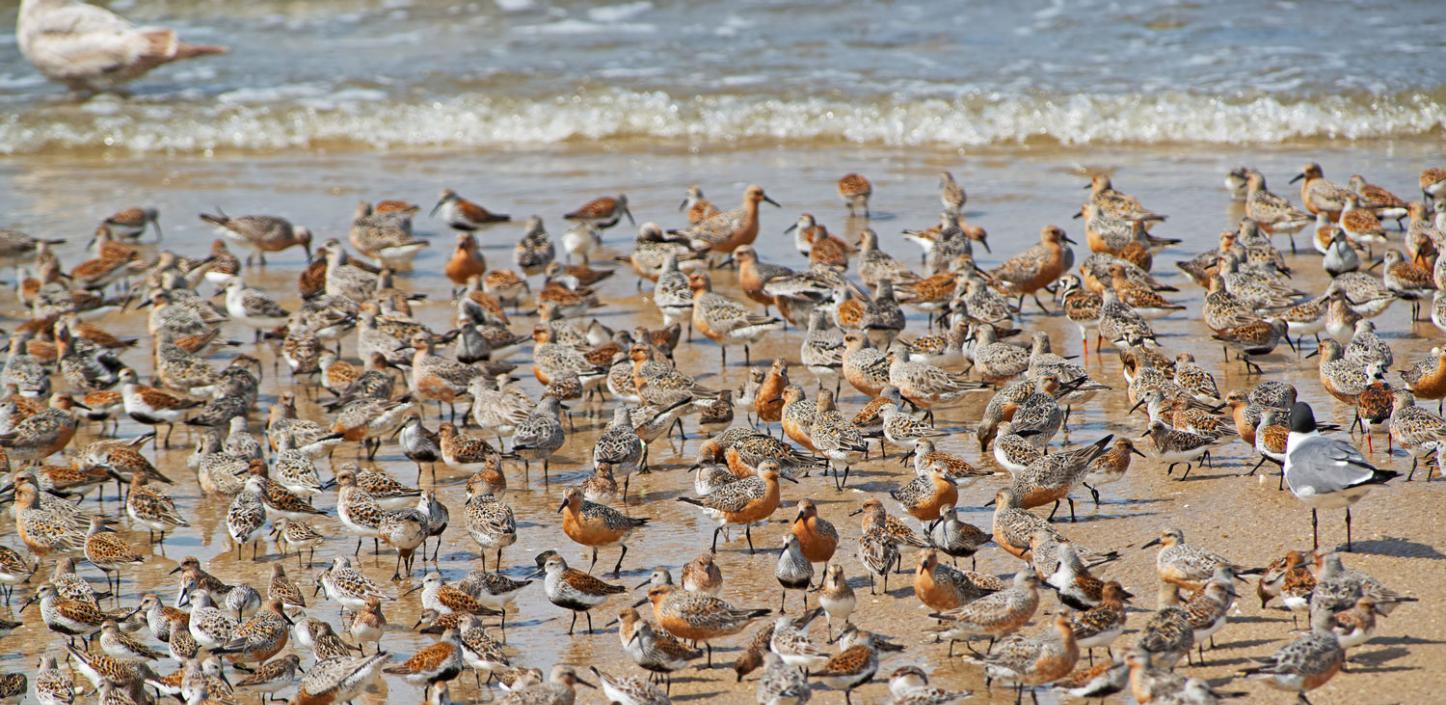
Guiding investments along the Atlantic Flyway
Since 1995, one particularly well-traveled red knot has flown far enough to make it to the moon and back.
Each year, this individual bird banded with the number B95 undertakes an epic southward journey, from arctic breeding grounds through the U.S. Eastern Seaboard, then across the Caribbean Sea to South America and on to the very tip of Chile, where he winters along desolate coastal beaches.
To endure such long journeys, B95 and his fellow red knots undergo extensive physical changes. Flight muscles enlarge while leg muscles shrink. Stomachs and gizzards decrease while fat mass increases by more than 50 percent. Even with such amazing adaptations, red knots still require stopover habitats rich in easily digested foods.
Each spring, red knots and other shorebirds depend on the Delaware Bay as one such stepping-stone on their journey back north. There, they fatten up on horseshoe crab eggs before tackling the last leg of their migration over vast boreal forest to their summer breeding grounds on the tundra.
The loss or degradation of just one of these stopover sites can put an entire population of red knots or other shorebirds at risk. In fact, more than 50 percent of the 75 species of shorebirds in North America are suffering drastic population declines.
Over the past seven years, NFWF has worked with conservation partners along the Atlantic Flyway to reverse the decline of one such shorebird: the American oystercatcher.
NFWF identified key threats to oystercatchers and developed strategies to address them. The Foundation then made strategic investments to reduce nest predation and human disturbance, increase stewardship efforts and monitor populations. In response, oystercatchers have rebounded, and in 2015 were on target to show a 35-percent increase over a 10-year period.
Seeking to replicate this success with other shorebird species, NFWF worked with government, conservation and academic partners in 2015 to launch the Atlantic Flyway Shorebird Initiative.
The new Flyway Initiative expands this highly collaborative model, giving scientists, biologists, refuge managers, private landowners and others a new opportunity to address threats common to 15 focal species across the Atlantic Flyway. The initiative also provides a framework to focus resources at critical stopover sites in the United States and elsewhere.
Contributing partner: U.S. Department of the Interior’s U.S. Fish and Wildlife Service